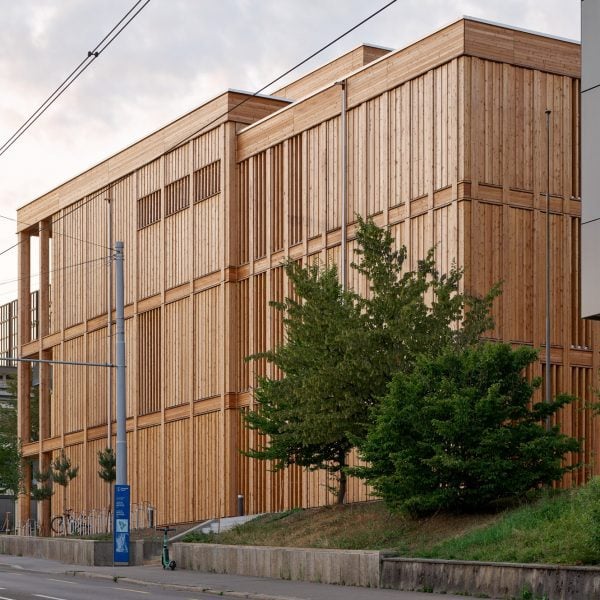Swiss architecture studio Itten+Brechbühl has created a temporary timber university sports hall in Zurich, with aspirations for its demountable construction to be “the new standard in architecture”.
Shortlisted in the sustainable building category of Dezeen Awards 2024, Sporthallenprovisorium Gloriarank replaces four sports halls at the University of Zurich with its glued laminated timber (glulam) structure clad in larch timber.
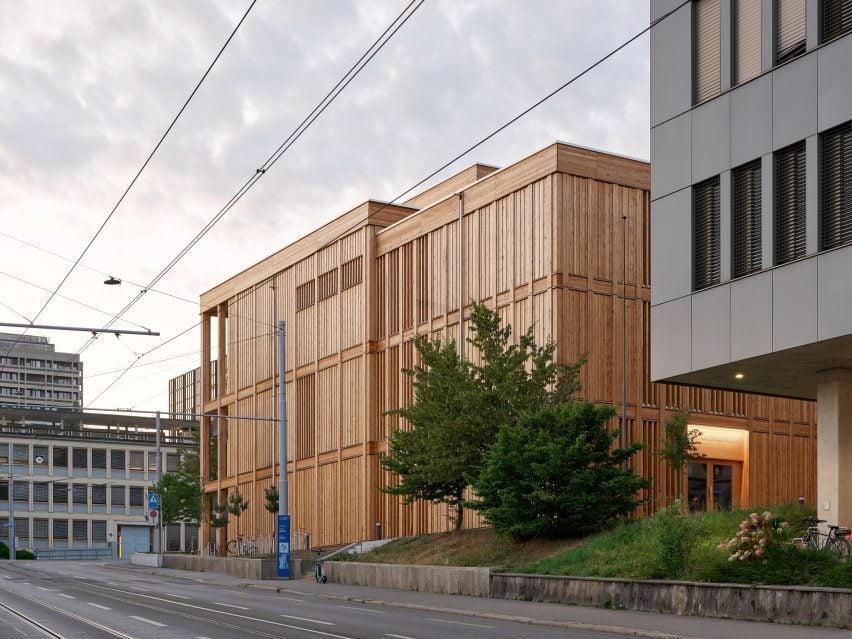
With sustainability in mind, Itten+Brechbühl designed the three-storey building with wood construction company Hector Egger Gesamtdienstleistung to be easily deconstructed after 10 years of use.
To design a demountable building should be the new standard in architecture,” Itten+Brechbühl associate partner Daniel Blum told Dezeen. “It is only in the last, let’s say, 100 years that we started glueing everything together.”
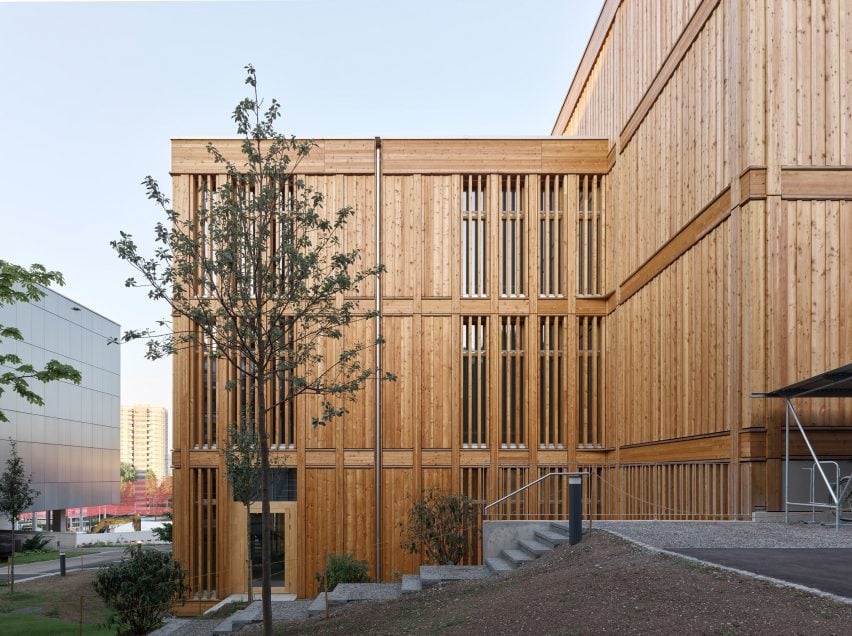
“The development of demountable buildings gives us the possibility to cultivate our buildings, not only in form and expression but through construction and detail,” he continued.
“If we do so, sustainability and sufficiency can become driving forces for the creation of architecture.”
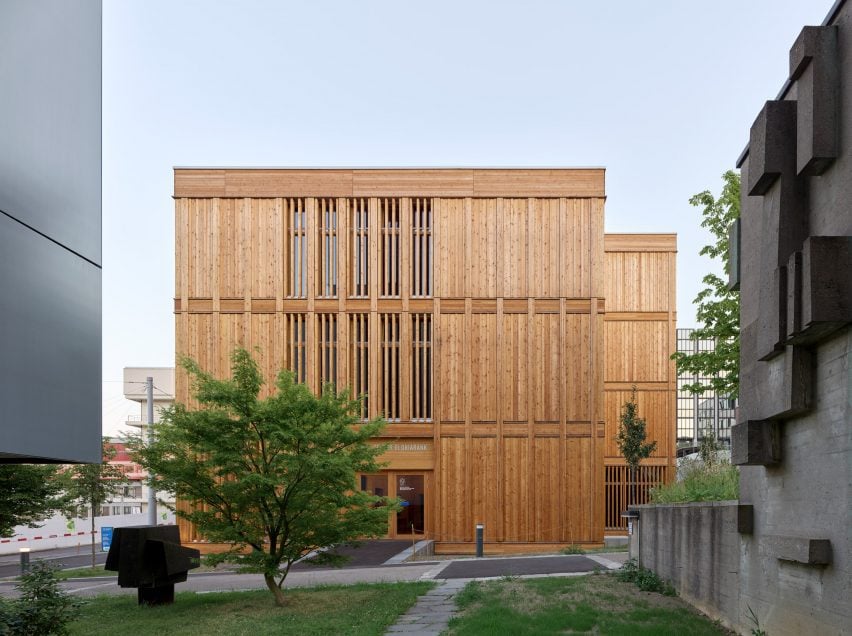
Situated on the corner of a triangular site, Itten+Brechbühl designed the building as a cluster of three combined cuboid volumes.
The largest volume contains sports halls, the smallest features changing rooms and shower facilities, and a windowless volume has storage spaces and plant rooms.
According to Blum, as much raw timber was used as possible so elements could biodegrade if they were not reused for another project.
Columns and beams were made from glulam, while untreated wood was used elsewhere in the building, including larch external cladding, oriented strand board (OSB) interior cladding, and plywood used to cover prefabricated slabs.
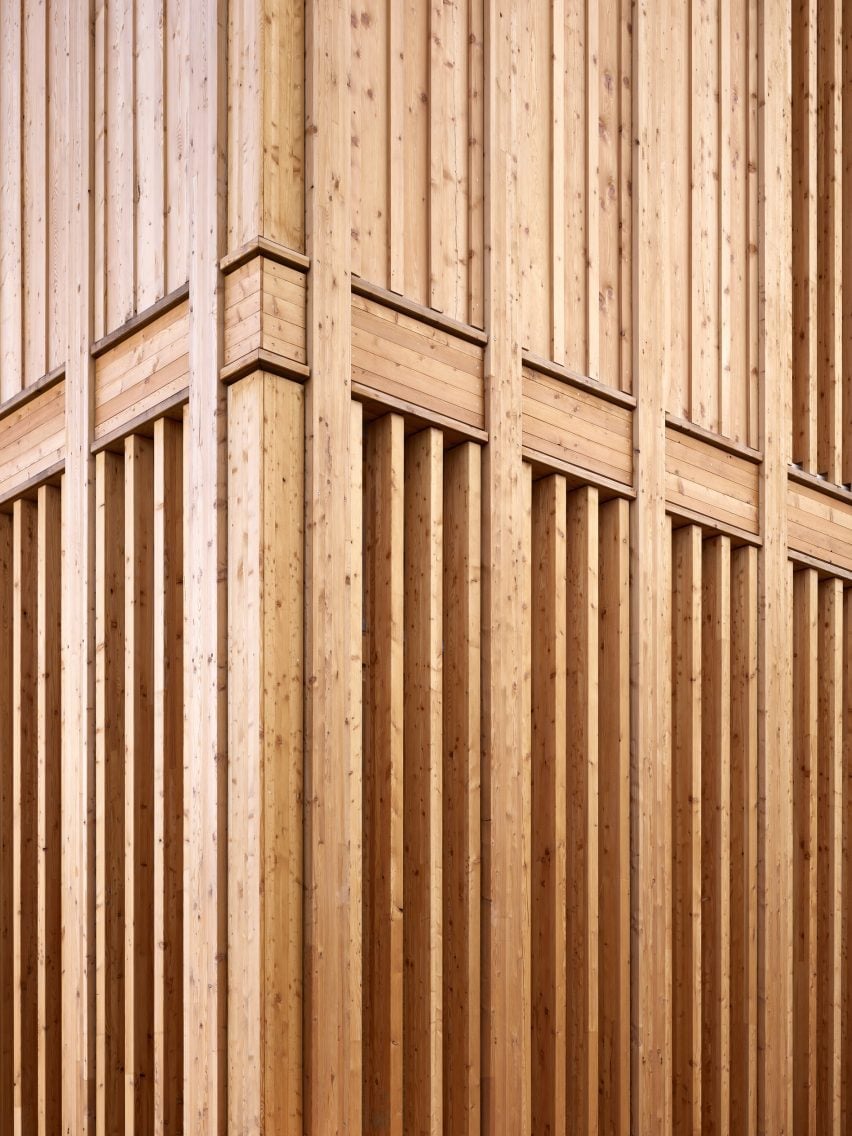
Standardised timber elements were fixed together with screws, intending to make the temporary building easy to demount and reuse.
“There are three scenarios – either the building will be dismantled and rebuilt somewhere else, or its parts will be reused,” said Blum.
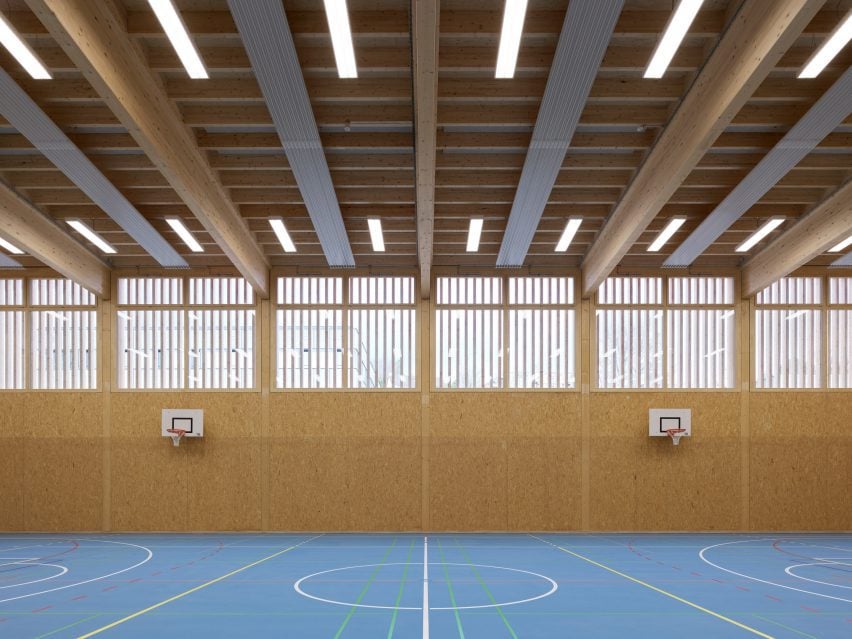
“If both of these options fail, there is a lot of raw timber and other materials that can be used to create new buildings, or let the timber become soil and grow new trees on it,” Blum continued.
“Raw timber is biodegradable, unlike treated wood, so even if the building as a whole or in parts will not be reused, it still has a low carbon footprint.”
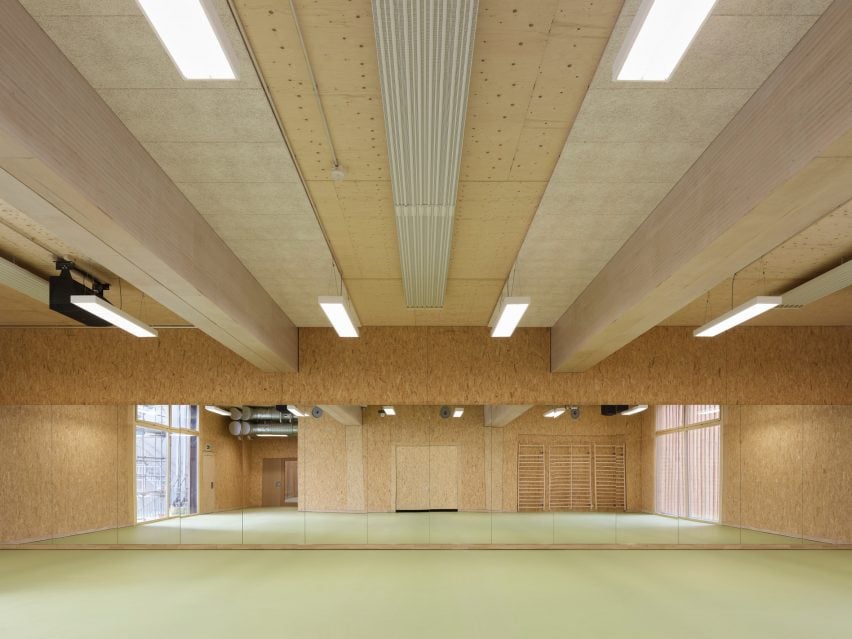
Different colours of wall tiles and linoleum flooring were used on each level – red on the ground floor, green on the first floor and blue on the second floor.
Founded in 1922 by Otto Rudolf Salvisberg and Otto Brechbühl, Itten+Brechbühl has seven architecture offices across Switzerland.
Other demountable structures recently published on Dezeen include a bamboo house in Germany and a forest pavilion made by students from London’s Architectural Association.
The photography is by Yohan Zerdoun.

